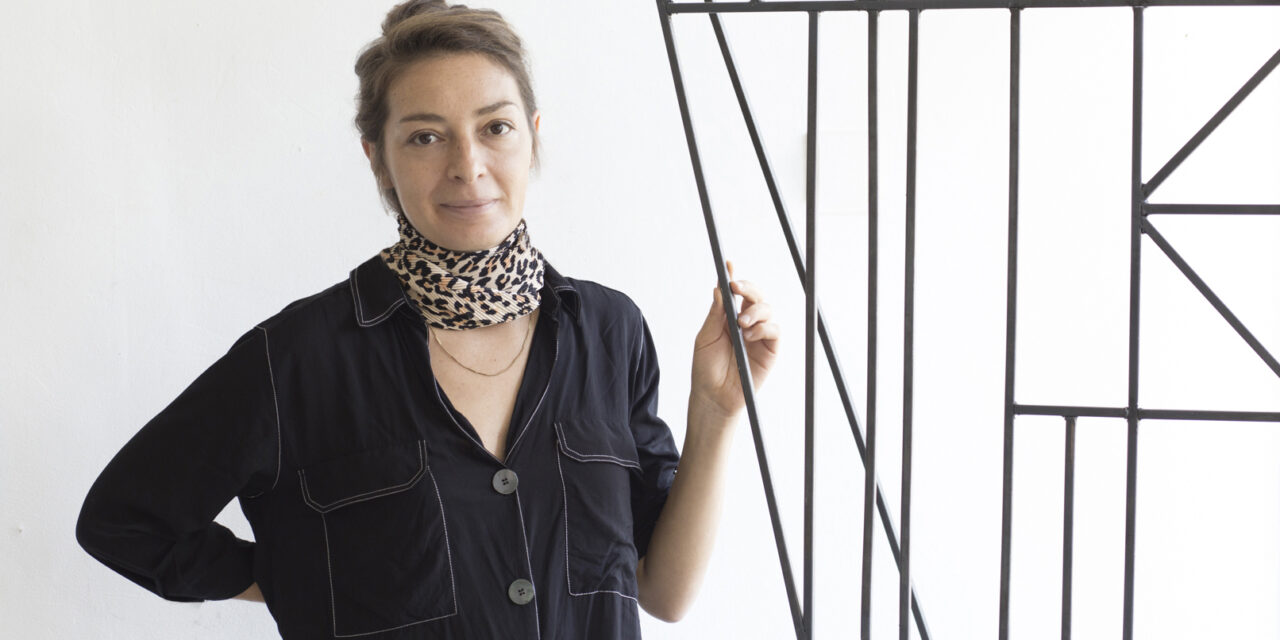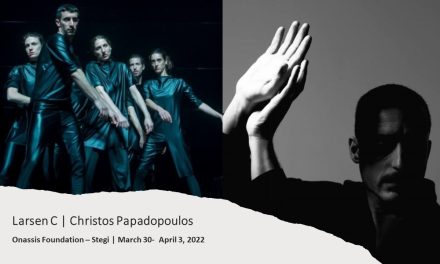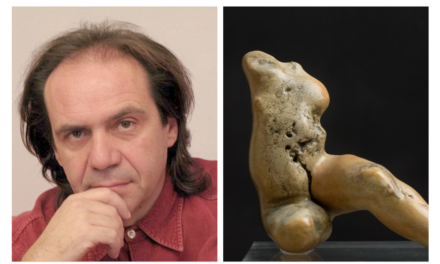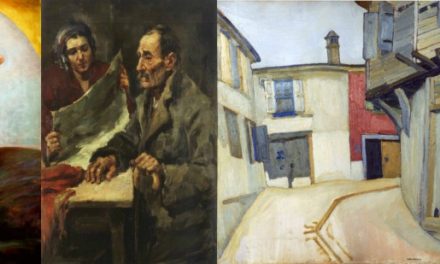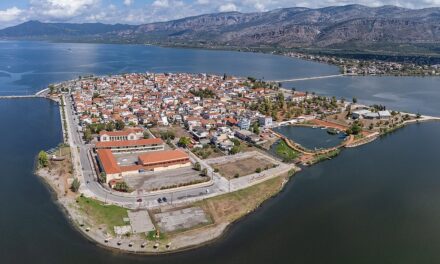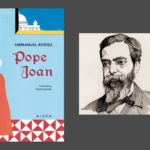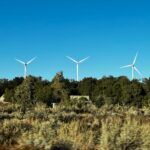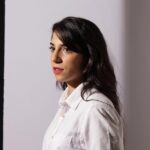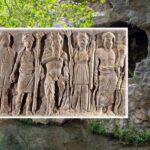Stefania Strouza ‘s artwork is a captivating blend of history, mythology, philosophy and science. Expressed in her inspiring, spontaneous, yet consistent manner, her art reveals the hidden complexities of life while offering a fulfilling visual experience. It explores how cultural narratives of different periods interact to produce new, hybrid identities, highlighting their spatial mobility and their cross-cultural references. The deep connection between man and nature unfolds through her diverse artistic repertoire, mainly featuring sculptures and installations. Resonating with the challenges of our times, her work is centered around the fragmentation of our world.
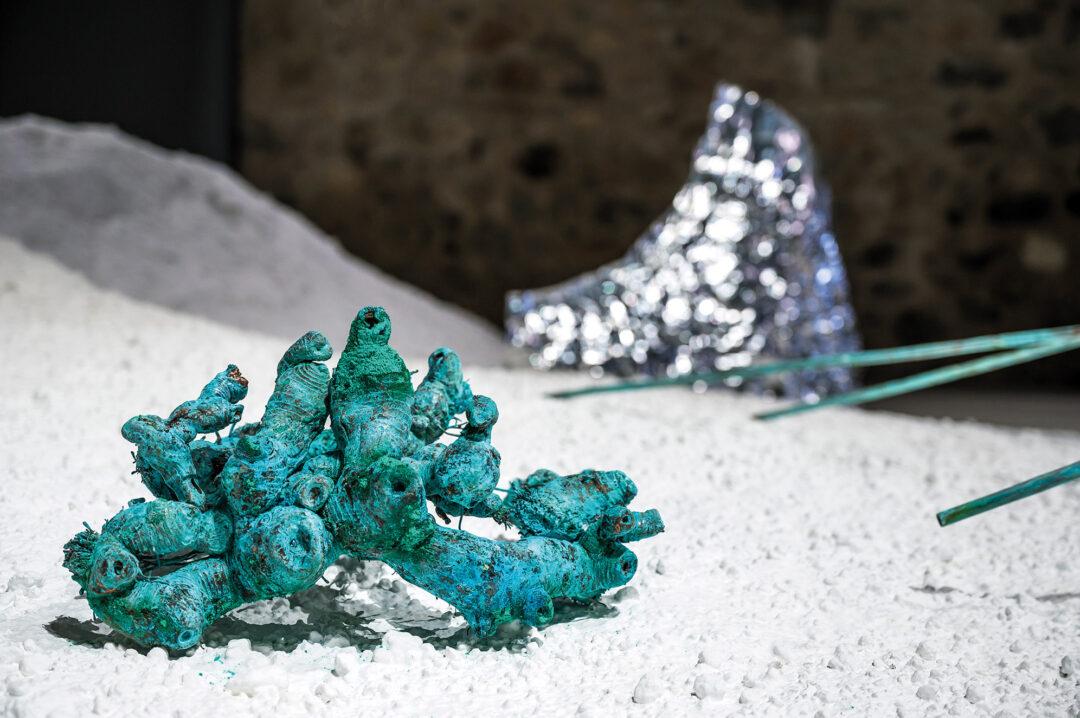
Stefania Strouza is the winner of the prestigious Art Athina 2023 Award, established as a recognition for young artists for their creativity and outstanding achievement. She studied Architecture at the National Technical University of Athens and completed her postgraduate studies in Environmental Art at the Edinburgh College of Art and Sculpture at the Academy of Fine Arts in Vienna. She has extensively exhibited in Greece and abroad. Her works can be found in the collection of the Onassis Foundation, the D. Daskalopoulos Collection and various other important collections in Greece and abroad. Her new solo exhibition Water abandons itself. Gold takes life over, and her retrospective Primary Tide are currently presented at the a.antonopoulou.art gallery and the MOMusAlexMylona Museum, respectively.
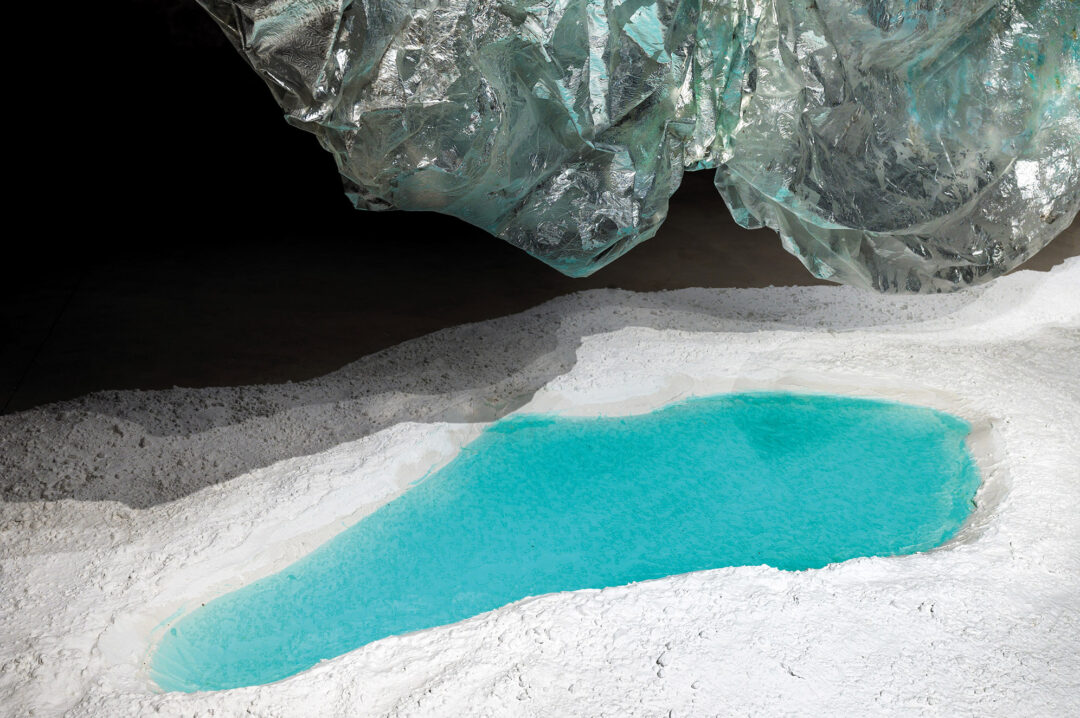
Stefania Strouza shares her perspectives on art and the creative process with Greek News Agenda*.
Water abandons itself. Gold takes over life is the title of your new solo exhibition. What do these elements symbolize and how are they incorporated in your art?
The title comes from a verse of Anne Carson’s poem: ‘Water abandons itself. Gold does not. Gold takes over life”; it echoes the tensions between life, myth and matter. Water, which often appears as an element in my works, is related to the notions of flow, transformation and instability.
In my previous body of work Currents and Currencies I focused on how the water flows move around stable ground, crossing times and spaces, transporting materials and ideas, bringing about fluctuations or even disruptions.
In this exhibition, which takes the myth of the Golden Fleece as its starting point, water connects us to the gold-bearing rivers of ancient Colchis where sheepskins were used to collect the nuggets of the precious metal. Gold refers to the winged ram with golden wool that crosses the Aegean Sea to the East, carrying on its back the fugitives Phrixus and Helle, but also to the out-of-control mining of our times.
In the works made of paper, imitation of gold leaf and oxidation, these elements intertwine in forms that sometimes allude to human and non-human bodies, constellations or archaeological finds. In dialogue with the ceramic fragments and drawings, they create an imaginary topography of geological and organic “bodies” which, while seemingly in a state of decay, create new relationships with each other and their surroundings.
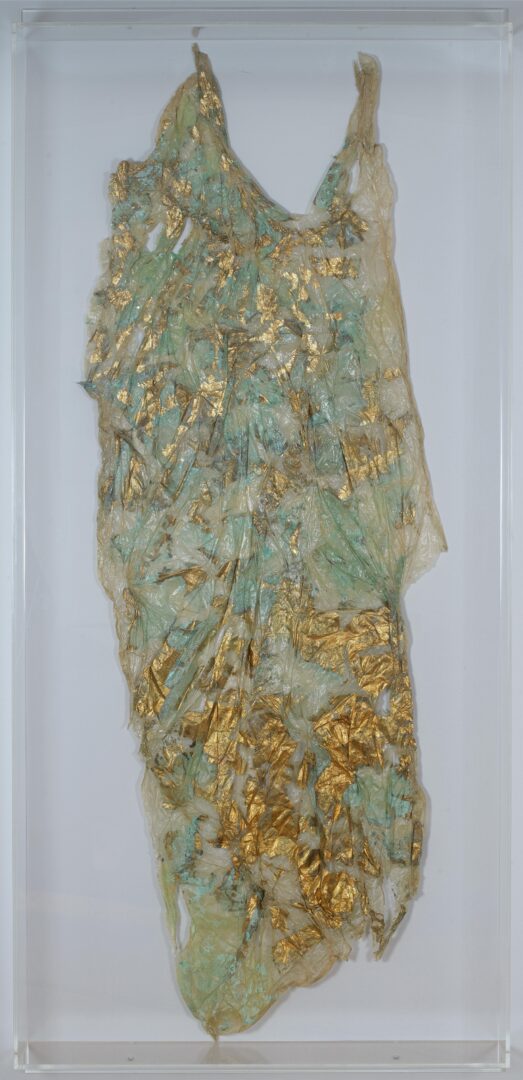
Life and death, present and past, ephemeral and eternal, and myth and reality coexist in your fragmented visual universe. Where do you stand as an artist in this fluidity?
My work takes into account forces concerning the Earth and the Universe, so they refer to periods long before man. At the same time, they refer to the contemporary geological period of the Anthropocene, and the tensions between Nature and Culture that come with it. I focus on these intersections between the geological and the living, the natural and the artificial in order to highlight worlds where they are constantly being shaped. This probably reflects my own worldview where destruction and re-creation coexist, where the World exists beyond our narrow perception and will continue to exist after us. This may sound ominous but in fact, it means that there is hope that life goes on beyond human plans and that our relationship with other species is not static but under constant consideration.
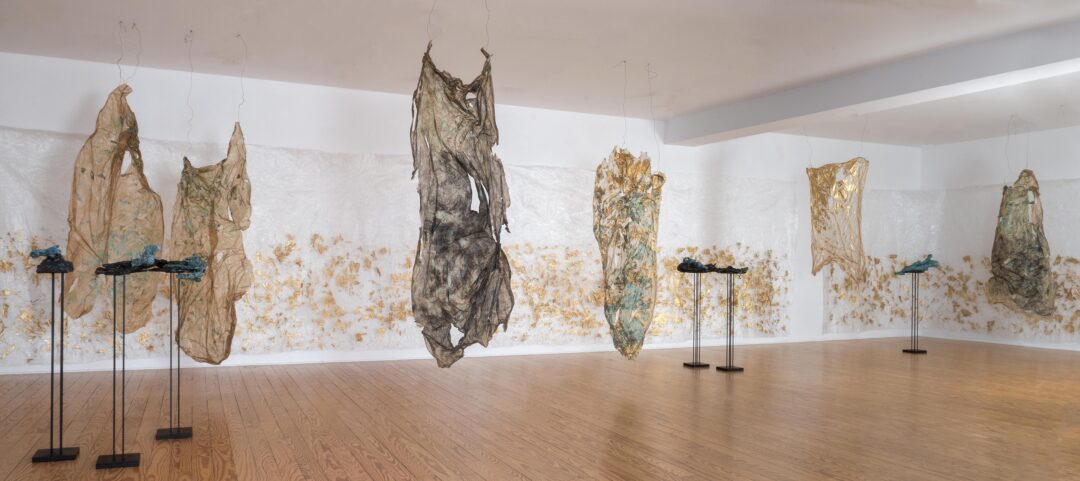
Your artistic references are so diverse; they incorporate elements from architecture, history, movies and literature. Which purpose does this serve?
This diversity is largely due to my way of thinking, which tends to combine things and ideas. In this sense, the works that emerge from this wide range of references, ultimately reveal an idea that is difficult to describe in a one-dimensional way.
So, for example, in my work asteroids speak the language of humans, sculptural landscapes take on mythical connotations and myths are transformed into architectural constructions. Although these works come with very different forms and materials, I think each one reflects a world of interdependencies between nature, culture, technology and myth.
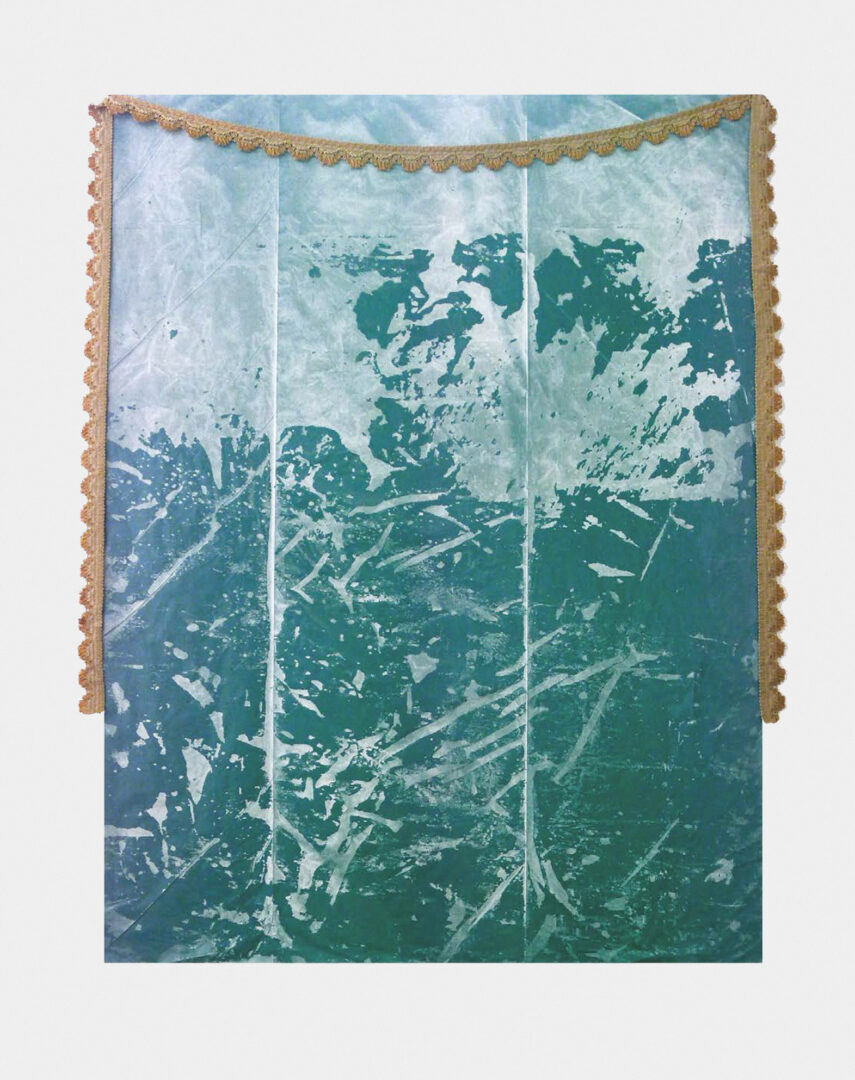
Greek mythology is a major source of inspiration in your works. What lies behind this choice? Medea is also a point of reference in your art…
Greek mythology began as something experiential which I encountered as images and stories in books, or as marble figures and representations in archaeological museums. My frequent reference to myths, however, is also due to a sense that they reveal elements that are repressed in contemporary culture, elements that relate to the unexpected, the unsettling that surrounds us and that we try to control.
The case of Medea, originally begun as a reference to the 1969 film of the same name by Pier Paolo Pasolini, starring Maria Callas. It evolved into an artistic investigation that has lasted over ten years. Medea took on many dimensions in the work, from her symbolic form as foreigner to the repulsive in her later interpretation as a techno-physical force that traverses landscapes, as in the project “I the sea voyage, I the occupation of the earth”, or planetary systems, as appears in my work that refers to the asteroid “212 Medea”. As far as I am concerned, Medea is ultimately a symbolic system to review the relationships between geology, nature and culture in the modern era.
Interview by Dora Trogadi
Intro photo: © Marily Konstantinopoulou
TAGS: ARTS

